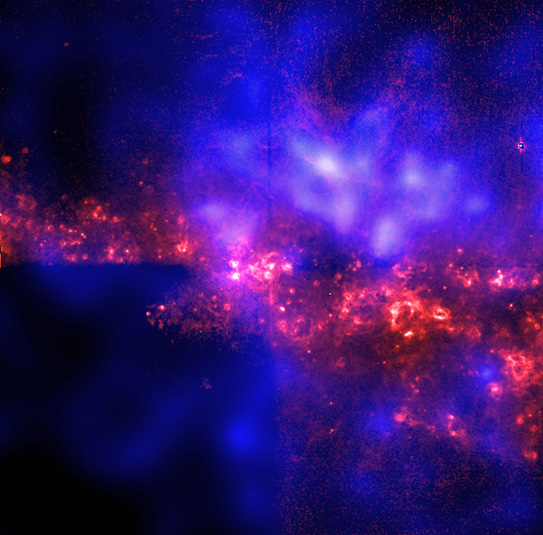

COURSE DESCRIPTION:
The Astrophysics Seminar (ASTR 6000) is a topical seminar, offered each semester on a different scientific subject, normally related to one of the astrophysics ``discipline courses'' that term. This semester, in connection with the graduate courses ASTR 5720 (Galaxies) and ASTR 5730 (Stellar Atmospheres), the seminar will be on the topic X-Ray Astronomy, including both theoretical and observational issues. The theoretical studies will include discussion of physical and high-energy radiative processes in X-ray astronomy. The observational studies will include studies of the Solar spectrum, supernova remnants, hot interstellar gas, quasars and active galaxies, normal and starburst galaxies, clusters of galaxies, neutron stars and pulsars, hot and cool stars, deep fields, and the X-ray background.
We will also discuss observations and instrumentation on several NASA/ESA space-borne telescopes. Check out the following 3 links:
A useful introduction to X-ray astronomy is provided in the the XMM Observatory Brochure.After preliminary lectures and readings, members of the class will read and discuss scientific papers. This seminar will meet 16 times during the term, each Wednesday at 4:00 pm, starting on August 28 (first class is Tuesday) and ending on Dec 12. There will be initial background lectures on X-ray astrophysics by Shull, followed by 13-14 student-led seminars. I will assign teams of 2 students to lead the discussions of the ``paper of the week''. Each student will be responsible for reviews in 2 or 3 sessions. However, all students are responsible for reading the weekly paper. Please treat this reading seriously and come prepared to describe the major results of the papers.
SEMINAR TOPICS AND READING:
Aug. 28 - Background Lecture 1 on X-rays (Shull)
Sept. 5 - Background Lecture 2 on X-rays (Shull)
Sept. 12 - The Chandra X-Ray Observatory (McEntaffer, Doyle)
Sept. 19 - The Solar Spectrum and Cool-Star Coronae (Bethell, Walawender)
Sept. 26 - Supernova Remnants (Browning, Jensen)
Oct. 3- The X-Ray Multi-Mirror (XMM) Observatory (Hearty, Van Vliet)
Oct 10 - Clusters of Galaxies and Cooling Flows (Neyrinck, Keeney)
Oct 17 - Compact X-Ray Sources and Accretion Disks (McEntaffer, Jensen)
Oct 24 - Normal Galaxies and Starburst Galaxies (Hicks, Boone)
Oct 31 - Quasars and Active Galaxies (spectra and disks) (Van Vliet, Baker)
Nov. 7 - Quasars and AGN (jets and outflows) (Doyle, Neyrinck)
Nov. 14 - Neutron Stars and Pulsars (Keeney, Baker)
Nov. 28 - Stellar Black-Hole Candidates (Browning, Drosback)
Nov. 29 - O stars and Star Clusters (Walawender, Bethell)
Dec. 5 - X-Ray Background and Deep Fields (Boone, Hearty)
Dec. 12 - Constellation-X Mission Study (Hicks, Drosback)
Last modified July 28, 2001 by JMS